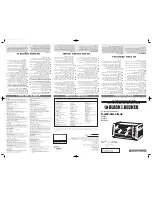
67
WARNING
Explosion Hazard. Asphyxiation Hazard.
Electrical Shock Hazard. Start-up of this boiler
should be undertaken only by trained and skilled
personnel from a qualified service agency.
Follow these instructions exactly. Improper
installation adjustment, service or maintenance
can cause property damage, personal injury or
loss of life.
A. Verify that the venting, water piping, gas
piping and electrical system are installed
properly.
Refer to installation instructions contained
in this manual.
B. Confirm all electrical, water and gas
supplies are turned off at the source
and that
vent is clear of obstructions.
C. Confirm that all manual shut-off gas valves
between the boiler and gas source are closed.
D. If not already done,
flush the system to remove
sediment, flux and traces of boiler additives. This must
be done with the boiler isolated from the system. Fill
entire heating system with water meeting the following
requirements:
NOTICE
pH between 7.5 and 9.5.
If system contains aluminum components, pH
must be less than 8.5
Chlorides< 50 ppm
Total Dissolved Solids - less than 2500 PPM
Hardness - 3 to 9 grains/gallon.
Pressurize the system to at least 20 psi (140 kPa).
Purge air from the system.
WARNING
Burn Hazard. The maximum operating pressure
of this boiler is 30 psig (210 kPa), 50 psig
(340 kPa), 60 psig (410 kPa), 80 psig (550 kPa)
or 100 psig (689 kPa) depending on the model
and safety relief valve option selected. Never
exceed the maximum allowable working pressure
on the heat exchanger ASME plate.
E. Confirm that the boiler and system have no
water leaks.
IX. System Start-up
F. Prepare to check operation.
1. Obtain gas heating value
(in Btu per cubic foot)
from gas supplier.
2. Apex gas valves have inlet and outlet
pressure taps
with built-in shut off screw. Turn
each screw from fully closed position three to four
turns counterclockwise to open taps. Connect
manometers to pressure taps on gas valve.
NOTICE
If it is required to perform a long term pressure
test of the hydronic system, the boiler should
first be isolated to avoid a pressure loss due to
the escape of air trapped in the boiler.
To perform a long term pressure test including
the boiler, ALL trapped air must first be removed
from the boiler.
A loss of pressure during such a test, with no
visible water leakage, is an indication that the
boiler contained trapped air.
3. Temporarily turn off
all other gas-fired
appliances.
4. Turn
on gas supply to the boiler gas piping.
5. Open
the field installed manual gas shut-off valve
located upstream of the gas valve on the boiler.
6. Confirm
that the supply pressure to the gas valve
is 13.5 in wc (3.4 kPa) or less. Refer to Table 19 on
page 53 for minimum supply pressure.
7. Using soap solution
, or similar non-combustible
solution, electronic leak detector or other approved
method, check that boiler gas piping valves, and
all other components are leak free. Eliminate any
leaks.
DANGER
Explosion Hazard. Do not use matches, candles,
open flames or other ignition source to check for
leaks.
8. Purge gas line of air.
G. Operating Instructions
Start the boiler using the Operating Instructions, see
Figure 34. After the boiler is powered up, it should go
through sequence of operation shown in Table 27 on
page 79.
H. Purge Air From Gas Train
Upon initial start-up, the gas train will be filled with air.
Even if the gas line has been completely purged of air,
Summary of Contents for APEX
Page 57: ...57 VIII Electrical continued Figure 26 Ladder Diagram ...
Page 58: ...58 VIII Electrical continued ...
Page 59: ...59 Figure 27 Wiring Connections Diagram VIII Electrical continued ...
Page 105: ...105 ...
Page 109: ...109 XIII Repair Parts continued APX625 APX725 and APX825 APX825 shown ...
Page 112: ...112 XIII Repair Parts continued APX425 and APX525 ...
Page 114: ...114 XIII Repair Parts continued APX625 APX725 and APX825 ...
Page 122: ...122 ...
Page 123: ...123 ...
















































